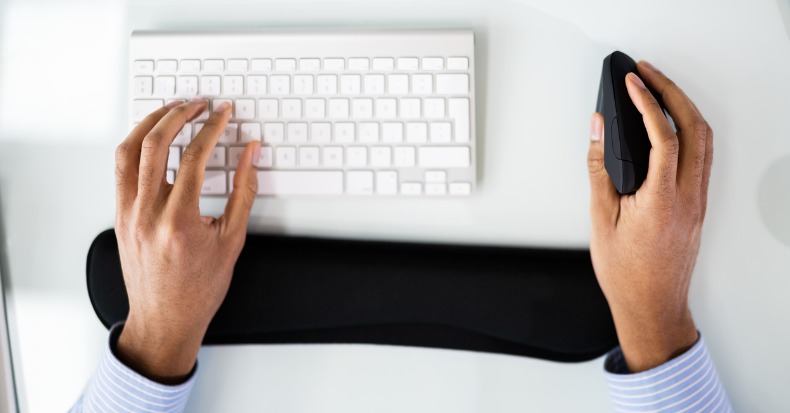We have discussed the topic of carpal tunnel syndrome (CTS) exercises previously but because this topic is so important, it warrants another look at this subject from a different perspective. Please keep in mind there are many exercises that will help patients with CTS, including a general, aerobic exercise program. In other words, just staying in shape will greatly enhance your health and is therapeutically beneficial for many conditions, including CTS. Remember, if your BMI (Body Mass Index) is over 25 (especially 30) and/or, if your waist size is greater than 35" (especially 40"), then the risk for developing CTS increases significantly. Therefore, diet and exercise are important components of improving your overall health—including conditions like CTS! Here are five exercises and/or suggestions for managing CTS:
- Circles: This exercise will strengthen the wrist & forearm muscles, increase the wrist’s range of movement/flexibility, and decreases wrist pain. This can be done multiple times a day as a "mini-break" from keyboard/computer work, as well as a "morning warm-up." Slowly rotate your wrist/hand from a palm up to a palm down position and repeat up to 10 times.

- Prayer Stretch: Stretching helps to breakup adhesions that form in the carpal tunnel. Place the palms together, fingers straight & pointing up (prayer position). Keeping the heels of the hands together, slowly lower the hands and raise the elbows so that the angle at the wrist decreases. Push your fingers together for 5 sec. Hold for 10 seconds and repeat up to 10 times, depending on time availability. Do this multiple times a day.
- Strengthening: Using a hand weight or TheraTubing, assume the same position as #1 above and slowly raise the weight or stretch the tubing by flexing the wrist with the palm in each of 4 positions: palm up, thumb up, palm down, and pinky up. Use your opposite hand to support your wrist with the pinky up.

- Ergonomics: Consider modifying your workstation, especially if your monitor is off to a side or too high, if your elbows are bent more than 90°, and/or if your forearms are digging into the edge of the desk. Use a trackball mouse so your arm can stay still and consider a larger screen, an ergonomic keyboard (one that is not flat), and a good chair with adjustable arms to rest the forearms on.
- Posture: Sit tall with your chin tucked in (no chin poking!), relax your shoulders (no shrugging), feet flat on the floor or on a box, and take mini-breaks at your workstation. If you have to, set a timer for every 30-60 minutes that will remind you to stretch.



